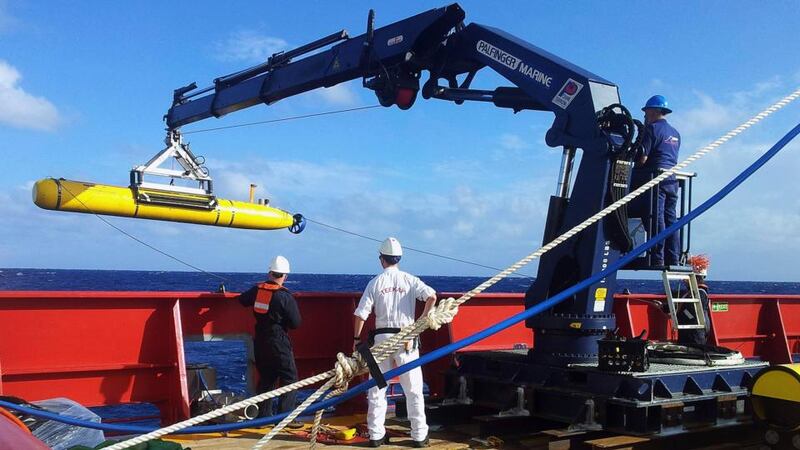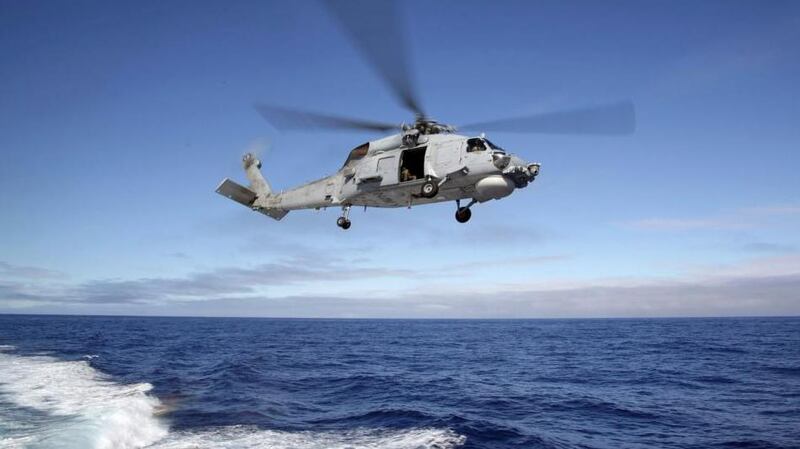A crucial stage in the four-week search for the missing Malaysia Airlines Flight MH370 began today as two military ships - one from Australia, the other from Britain - directed sensor technology beneath the surface and began the underwater phase of the hunt, hoping to pick up signs of wreckage at the bottom of the Indian Ocean.
The ships will search a single 150-mile track of the ocean floor, with the ships starting from opposite ends and converging in the middle, said retired Air Chief Marshal Angus Houston, the Australian official overseeing the co-ordination of the search.
Both vessels are equipped with listening devices that could hear pings from the plane’s flight data and cockpit voice recorders, or black boxes, which are nearing the end of their battery life.


Mr Houston said the ships - the HMS Echo of the Royal Navy and the Ocean Shield of the Royal Australian Navy - were part of a deployment of nine vessels in today’s search, about 1,050 miles off Perth, Australia. The ships will be joined by as many as 10 military planes and four civilian jets.
The Ocean Shield is outfitted with a so-called towed pinger locator, a batwing-shaped device with a microphone that is towed below the vessel. Much is riding on the effectiveness of the underwater listening devices - and on the estimates of analysts who have designated the search zone.
The black boxes’ batteries, which typically last about a month, are expected to expire next week. When they die, so too will the pinger signal. In the meantime, crews on the planes and other vessels will continue searching for floating debris.
“We’ll continue the surface search for a good deal more time because if we find a piece of wreckage on the surface, or some evidence on the surface that the aircraft went into the water nearby, that gives us a much better datum” to conduct the underwater search, Mr Houston said during a news conference in Perth.
“Instead of searching over an area the size of Ireland, we might be able to get into an area which is the size of the metropolitan area of Perth, for example,” he said. He said there was still “a great possibility” that searchers might find debris from the plane on the ocean surface.
On Monday it will be 30 days since the jetliner lost communications and disappeared from civilian radar less than an hour into an overnight flight from Kuala Lumpur to Beijing on March 8th.
The Boeing 777 was briefly picked up on military radar on the other side of Malaysia and analysis of subsequent hourly electronic “handshakes” exchanged with a satellite led investigators to conclude the jet crashed far off the west Australian coast hours later.
Experts have warned the towed pinger locator may be of little use unless investigators can get a much better idea of exactly where the plane went into the water, because its limited range and the slow speed at which it must be towed mean it cannot cover large areas of ocean quickly.
Today up to 14 planes and nine ships were scouring the search area of about 223,000 sq km (86,000 sq miles) - roughly the size of the US state of Minnesota - some 1,680 km (1,040 miles) west-north-west of Perth.
Britain is also sending HMS Tireless, a Trafalgar-class nuclear submarine with sonar capabilities to the scene of the search, and a Malaysian frigate was due to arrive tomorrow.
Malaysian prime minister Najib Razak yesterday joined his Australian counterpart Tony Abbott in a tour of RAAF Base Pearce, near Perth, where aircrews from seven countries have been flying dozens of missions deep into the southern Indian Ocean.
Malaysian authorities have faced heavy criticism, particularly from China, for mismanaging the search, now in its fourth week, and holding back information. Most of the 239 people on board the flight were Chinese.
“The world expects us to do our level best, and I’m very confident we will indeed show what we can do together as a group of nations; that we want to find answers, that we want to provide comfort to the families and we will not rest until answers are indeed found,” Mr Najib said.
Authorities have not ruled out mechanical problems as causing the disappearance, but say all the evidence suggests the plane was deliberately diverted from its scheduled route.
Malaysia’s police chief said the investigation was focusing on the cabin crew and pilots, after clearing all 227 passengers of possible involvement in hijacking, sabotage or having personal or psychological problems that could have been connected to the disappearance.
New York Times/Reuters








